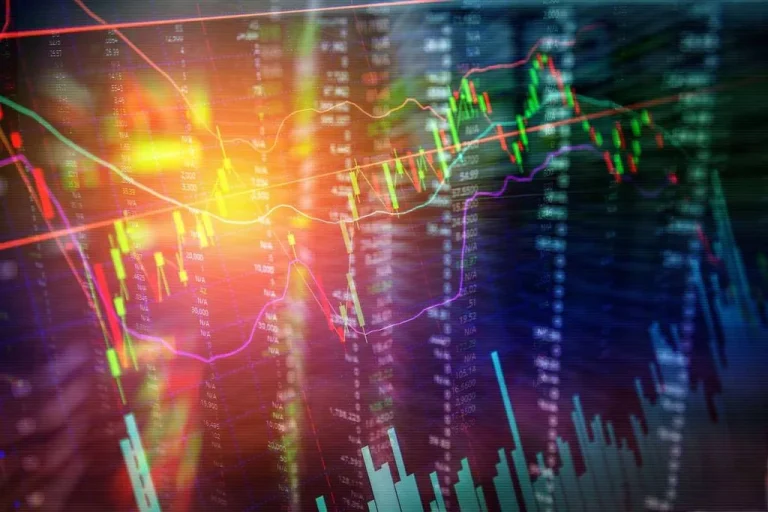Content
The trader was convicted and this kind of market manipulation is now banned to prevent a repeat of May 2010. An over-reliance on automation can be dangerous given the set parameters in which algorithms operate, and unexpected events https://www.xcritical.com/ like a bubble or crash can expose the inflexibilities of code. Price, timing, quantity, or any supporting mathematical model are the basis for its operation.
Are there any risks associated with Algorithmic Trading?
After all, these trading systems can be complex and if you don’t have the experience, you may lose out. Because what is algorithmic trading example trade rules are established and trade execution is performed automatically, discipline is preserved even in volatile markets. Discipline is often lost due to emotional factors such as fear of taking a loss, or the desire to eke out a little more profit from a trade. Automated trading helps ensure discipline is maintained because the trading plan will be followed exactly. For instance, an order to buy 100 shares will not be incorrectly entered as an order to sell 1,000 shares.
Cutting-Edge Developments in Algorithmic Trading

This enables traders Proof of stake to react instantly to market changes, capitalize on fleeting opportunities, and reduce the influence of emotional biases that often affect manual trading decisions. Moreover, the ability to process vast amounts of data and execute multiple trades simultaneously provides a significant edge over traditional trading methods. By aggregating information from sophisticated market participants who trade for profit based on informative signals, market prices reflect the fundamental values of underlying assets. However, recent research indicates that AI-powered trading also carries risks.
How does Algo Trading differ from traditional trading methods?
Its reliance on data-driven decision-making helps traders identify trends and patterns that may not be immediately apparent through manual analysis. Moreover, the ability to backtest strategies using historical data allows traders to refine their approaches and optimize performance before deploying algorithms in live markets. Algorithmic trading systems are designed to process vast amounts of market data and execute trades at lightning-fast speeds, often within milliseconds.
With the explosion of machine learning, natural language processing, and alternative data sources, algorithms can now incorporate information that goes beyond just price and volume. They may “read” earnings reports, parse social media sentiment, or analyze satellite imagery to gauge supply chain activity. Algorithmic trading’s primary advantage is its ability to execute trades with speed, precision, and efficiency, eliminating human error. One of the main pros of algorithmic trading is the elimination of human error in decision-making. As a result, the accuracy of such efforts will usually be visibly higher than that of manual trading. The above insights into the basics and inner workings have shown us how effectively AI trading functions.
This shift towards ethical AI reflects a broader trend in the financial industry, where investors are seeking to balance profitability with social impact. By incorporating ESG factors, algorithmic trading systems not only meet the demands of socially conscious investors but also contribute to long-term market sustainability. As ESG data becomes more accessible, these algorithms are expected to play a pivotal role in promoting responsible investment practices.
The trading instructions are programmed into the trading software in the form of algorithms, with reference to variables like time, volume and price. In turn, the computer makes the trade according to the instructions given to it. This makes algo trading quite precise, well-executed, well-timed, and free from most possible human errors.

The five best algorithmic trading strategies mentioned below will likely stay relevant in the future. In every instance, they are placing a bet that an extreme level, such as volatility, price, growth, or a technical signal, would eventually revert to normal. The mean reversion technique attempts to capture profits as an asset price reverts to average or normal levels. While algorithmic trading can seem like a silver bullet—fast, emotionless, and systematic—it is not without its downsides.
- For example, some jurisdictions have imposed restrictions on specific algo trading strategies, such as HFT, or mandated additional safeguards to prevent market disruptions.
- You’re keen to purchase 1000 shares of company ABC, but only when its price surpasses Rs. 100.
- Automated trading helps ensure discipline is maintained because the trading plan will be followed exactly.
- Algo trading helps to reduce the subjective parts of trading and ensures the decisions are made objectively.
- If the development and adoption of AI are dominated by a few leading entities, market prices may become less informative regarding asset fundamentals.
- It reduces the risk of human error and improves the overall quality of stock prices.
Algo-traders desire to have the fastest computers that are capable of placing trades at instantaneous speeds. Algo trading is an innovative method of trading that uses algorithms as a pre-defined set of instructions. These algorithms or instructions are run by the system to obtain a particular output. Buy and sell signals are received by the program and, based on the signals, the orders are placed and executed. While ECN platforms offer tight spreads and quick execution, there can still be instances of slippage during periods of extreme volatility. If liquidity is low or if the market is moving too quickly, orders may not be executed at the exact price requested.
The orders are matched based on price and time priority, meaning that the highest buy order is matched with the lowest sell order. Once a match is found, the trade is executed almost instantly, often with little to no slippage. Since trades use the swings in the prices of the securities to capture trades, speed becomes one the most important factors while trading. Algorithmic trading enables quick execution of trades by instantly examining various parameters and technical indicators. At times, algorithmic trading is blamed for market turbulence, like sudden “flash crashes.” While these events are rare, they highlight the importance of proper risk controls.
Understanding both the benefits and drawbacks helps set realistic expectations. Algorithmic trading is versatile and can be applied to forex, stocks, crypto, and other markets, but its effectiveness depends on the liquidity and volatility of the specific market. As a result, they can process much more data and make even better decisions.
One of the ways how AI changes wealth management in this particular area involves news and social media feed analysis. To summarize, algo trading time scales offer diverse opportunities, spanning high-frequency to longer-term strategies. This adaptability reflects the versatility of algorithm-based trading within the ever-evolving financial landscape. To begin with, algo trading, you can start by picking up programming dialects like Python.
Which often results in extreme losses for those who are unprepared for such events to occur during their trading sessions online. Women are often more emotionally driven than men when it comes to investing. This can lead to costly mistakes if they don’t take the time to think through their decisions carefully before acting on them.
Algorithmic trading can also be used to place limit orders and stop-loss orders. Arbitrage is another common example, where algorithms exploit temporary price discrepancies between identical or similar digital assets across different markets. For instance, a stock market trading algorithm might trigger a purchase at a low stock price on one exchange and sell it at a higher price on another, capturing the price difference as profit. In market-making, algorithms provide liquidity by placing simultaneous buy and sell orders for a specific asset, profiting from the small difference between the bid and ask prices.